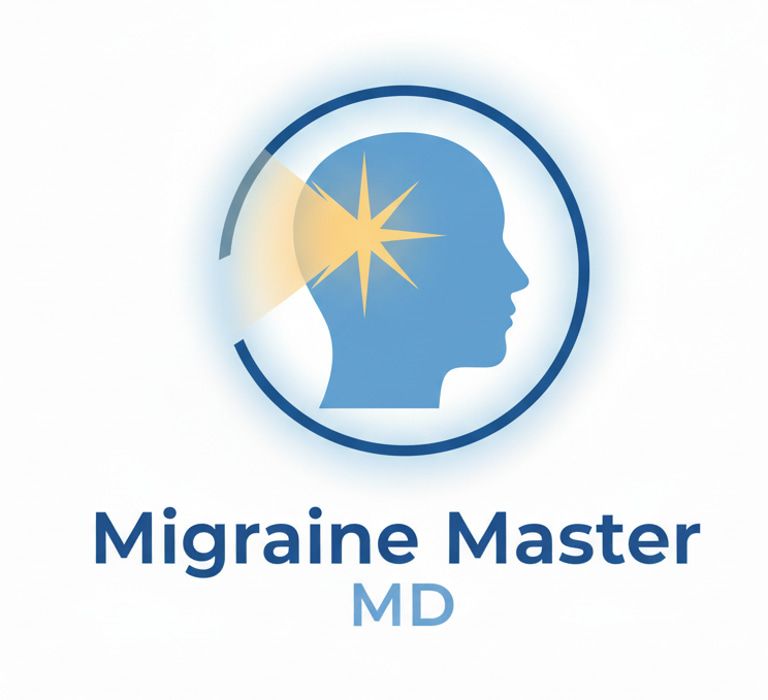Migraine Treatment Options
A guide to understanding ways to prevent and stop migraine pain.
Acute (Pain Relief) Treatments
These treatments are taken during a migraine attack to stop the symptoms and relieve pain.
Over-the-Counter (OTC) Pain Relievers
These are often effective for mild to moderate migraines. They include medications like aspirin, ibuprofen (Advil, Motrin), and naproxen (Aleve). Combination products that include caffeine can enhance the pain-relieving effect.
Note: Be cautious of overuse, as this can lead to medication-overuse headaches.
Triptans
Triptans are prescription drugs that are a first-line treatment for moderate to severe migraine. They work by blocking pain pathways in the brain. Examples include Sumatriptan and Rizatriptan. They are available in various forms, including pills, nasal sprays, and injections. These may not be suitable for individuals at risk of stroke or heart attack.
Gepants (CGRP Antagonists)
This is a newer class of oral medications for acute treatment. They work by targeting a protein (CGRP) that is involved in migraine attacks. Examples include Ubrogepant (Ubrelvy) and Rimegepant (Nurtec ODT). They are a good option for people who cannot take or do not respond to triptans.
Preventive Treatments
These treatments are taken on a regular basis to reduce the frequency, severity, and duration of migraine attacks.
Blood Pressure Medications
Certain medications used to treat high blood pressure can also prevent migraines. These include beta-blockers like Propranolol and calcium channel blockers.
Antidepressants
Tricyclic antidepressants, such as Amitriptyline, have been shown to be effective in migraine prevention, even in individuals who do not have depression.
Anti-seizure Drugs
Some medications used to treat epilepsy, like Topiramate and Valproate, can also help reduce the frequency of migraines.
CGRP Antibody Injections
This is a newer class of preventive medication specifically designed to target the CGRP protein pathway. They are typically administered as a monthly or quarterly self-injection. Examples include Erenumab (Aimovig) and Fremanezumab (Ajovy).
Botox Injections
OnabotulinumtoxinA (Botox) injections are approved for the prevention of chronic migraine, which is defined as having 15 or more headache days per month.
Lifestyle & Home Remedies
Lifestyle changes can play a significant role in managing migraines. The mnemonic SEEDS is often used to remember key areas: Sleep, Exercise, Eat, Diary, and Stress.
Consistent Sleep
Aim for 7-9 hours of quality sleep per night. Maintain a regular sleep schedule by going to bed and waking up at the same time every day, including on weekends.
Regular Exercise
Engage in regular, moderate aerobic exercise such as brisk walking, swimming, or cycling. Aim for 30-50 minutes, 3-5 times per week.
Healthy Eating Habits
Do not skip meals, and stay well-hydrated by drinking plenty of water throughout the day. Identifying and avoiding personal food triggers (such as aged cheeses, processed meats, and alcohol) can also be beneficial.
Stress Management
Incorporate stress-reduction techniques into your daily routine. This can include mindfulness, meditation, deep breathing exercises, yoga, or biofeedback.
Supplements
Some studies suggest that certain supplements may help prevent migraines. These include high doses of riboflavin (vitamin B-2), coenzyme Q10, and magnesium. You should always talk to your doctor before starting any new supplement.
When to See a Doctor
Seek immediate medical attention if you experience:
A sudden, extremely severe headache (a "thunderclap" headache).
A headache following a head injury.
A headache accompanied by fever, stiff neck, confusion, seizures, double vision, numbness, or difficulty speaking.
